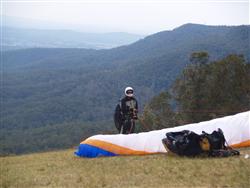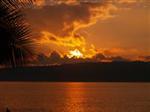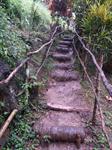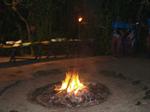Want an Exciting New Job in Adventure Tourism?
Then get started on this great 100-hour course!
Adventure Tourism is an exciting and growth industry. Why not get involved? This 100-hour course on Adventure Tourism helps you to learn more about outdoor adventures, sustainability, environmental tourism and more. You can start this course at any time to suit YOU!
DO YOU WANT TO PLAN & MANAGE SERVICES IN ADVENTURE TOURISM?
 Learn about the scope of adventure tourism.
Learn about the scope of adventure tourism.
- Develop your own ideas for adventure tourism services.
- Understanding the industry and the special care required in the planning of activities and training of staff.
COURSE STRUCTURE AND CONTENT
Course Duration: 100 hours.
Start Date: Start at any time - study at a pace that suits you, and with full tutor support for the duration of your studies.
Lessons: The course comprises 8 lessons as detailed, below.
Lesson 1. Scope and nature of Adventure tourism
 Introduction.
Introduction.
- Historical Themes.
- Adventure Tourism Experiences.
- Motivating Factors for Adventure Tourism.
- Adventure Activities.
- Limitations and Risks.
- Artificial Environments.
- Non-Physical Adventure Tourism.
Lesson 2. The Product - Sources & Types
- Types of Adventure Tourism.
- Types of Adventure Locations.
- New Zealand.
- Iceland.
- India.
- Africa.
- Namibia.
- Brazil.
Lesson 3. Management
- Issues.
- Adventure Tour Operators.
- Retail Travel Agents.
- Accommodation Establishments.
- Transport - to destination and within destination.
- Adventure Ground Handlers.
- Media - guide books, travel writers, magazines.
- Marketing.
- Seasonal Fluctuations.
- Marketing Tools.
Lesson 4. The Customer
- Adventure Tour Customers.
- Market Sector.
- Tourist Motivation.
- Conservation Tourism.
- Adventure Tourism Behaviour.
- Risk Taking.
- Ecotourism.
- Customer Expectations.
Lesson 5. Locations & Facilities - Artificial environments
- Artificial Environment Tourism.
- Artificial Adventure Environments.
- Advancements in Adventure Developments.
- Examples.
- Classification.
Lesson 6. Locations & Facilities - Natural
- Natural Environments.
- Adventure Tourism in Natural Environments.
- Wildlife Tourism.
- Nature-based Tourism in Antarctica.
- Ecotourism.
- Benefits of Nature-based Tourism.
- Nature Based Ecotourism.
- Locations and Destinations.
- Drawbacks and Advantages of Developing Facilities in Wilderness Areas.
Lesson 7. Ethics, Sustainability and Environmental impacts
- Introduction.
- Social and Cultural Impacts.
- Environmental Impacts.
- Economic Impacts.
Lesson 8. Risk management & Insurance
- Some Categories of Risk.
- Risk Management Strategies & Plans.
- Assessing the Risk.
- Crisis Management.
- Insurance.
COURSE AIMS
- Define the nature and scope of adventure tourism.
- Identify types of adventure tours, and sources of information on them.
- Explain the requirements of managing an adventure tourism destination or service.
- Identify potential customers, customer needs and requirements in planning and conducting adventure tours.
- Identify various kinds of artificial environments for adventure tours, and the facilities typically provided at them.
- Discuss the requirements and problems associated with using natural locations for adventure tours.
- Identify ethical and environmental issues related to adventure tourism.
- Identify kinds of risk and strategies for reducing their negative impacts on customers and operators.
WHAT THE COURSE COVERS
Here are just some of the things you will be doing:
- Define Adventure Tourism in your own words.
- List target groups for marketing adventure tourism.
- What type of adventure tourism do you consider to have the greatest potential for financial success in your region.
- Summarise brochures on five different adventure tourism attractions, services or tours.
- Submit a list of Adventure Tourism attractions
- Analyse the potential of adventure tourism in the region in which you live.
- Compare the attractions and disadvantages of three different locations or destinations in adventure tourism.
- How does Adventure Tourism differ to other types of Tourism?
- How does the media influence Adventure Tourism in your Country?
- Explain licensing requirements for three different types of adventure tourism activities in your country.
- Describe ways in which the adventure tourism market might be segmented.
- How are consumer trends changing in adventure tourism?
- Explain the difference between soft and hard adventurers.
- Based on your research, discuss the relationship between adventure and risk.
- What kinds of people are most likely to go on adventure tours?
- Differentiate between artificial and natural adventure tourism destinations.
- List as many types of different artificial tourism attractions as you can conceive of (they do not have to exist), and indicate beside each what you believe is its likely target market.
- Arrange a list above into soft & hard destinations.
- Report on the environment, facilities and services at the two different adventure tourism destinations. in two columns: one column hard & one soft
- List different types of natural adventure tourism activities
- What areas of natural adventure tourism have experienced growth in recent years?
- What issues should management consider when planning to use natural adventure tourism destinations?
The Nature And Scope of Adventure Tourism
 Adventure has so long been part of our history and civilisation that it plays a part in many of our most important narratives. Aside from the drama and romance, many modern day ‘adventure’ activities where in fact necessary for our survival such as canoeing, bush walking, orienteering, horse riding and rock climbing. However, the need for adventure has not been lost. With the rise of an increasingly risk taking society and higher survival rates, many people find that they need to challenge themselves for many reasons. They may need to find out what they are capable of, how strong they are, and not just physically but also emotionally. The confrontation of their own fear and ability in adventure activities can give participants an increased sense of self-reliance and self-esteem. However, if the risk is mismatched to the client, the result can be a loss of confidence and a negative association with the activity.
Adventure has so long been part of our history and civilisation that it plays a part in many of our most important narratives. Aside from the drama and romance, many modern day ‘adventure’ activities where in fact necessary for our survival such as canoeing, bush walking, orienteering, horse riding and rock climbing. However, the need for adventure has not been lost. With the rise of an increasingly risk taking society and higher survival rates, many people find that they need to challenge themselves for many reasons. They may need to find out what they are capable of, how strong they are, and not just physically but also emotionally. The confrontation of their own fear and ability in adventure activities can give participants an increased sense of self-reliance and self-esteem. However, if the risk is mismatched to the client, the result can be a loss of confidence and a negative association with the activity.
 Adventure tourism provides an opportunity to participate in physically challenging activities. The degree of adventure varies considerably – the least risky and physically demanding activities are termed ‘soft adventures’ while the more difficult ones requiring advanced skills and a high level of determination are called ‘hard adventures’. Soft adventures might include a guided walking tour, a family camping holiday, or a reef snorkelling day trip. Guided soft adventures will often have a focus on education. Hard adventures are such things as white water rafting, mountaineering, sea kayaking, and caving. Typically, hard adventures carry a higher level of challenge and risk, and hence appeal to those who are physically fit and who thrive on excitement and danger.
Adventure tourism provides an opportunity to participate in physically challenging activities. The degree of adventure varies considerably – the least risky and physically demanding activities are termed ‘soft adventures’ while the more difficult ones requiring advanced skills and a high level of determination are called ‘hard adventures’. Soft adventures might include a guided walking tour, a family camping holiday, or a reef snorkelling day trip. Guided soft adventures will often have a focus on education. Hard adventures are such things as white water rafting, mountaineering, sea kayaking, and caving. Typically, hard adventures carry a higher level of challenge and risk, and hence appeal to those who are physically fit and who thrive on excitement and danger.
An emerging form of soft adventure tourism is one aimed at families. This is to provide manageable adventure activities that cater for the whole family often in exotic locations with an emphasis on cultural tourism. Often these trips are designed for low numbers with extra stops for young travellers and usually lower age ranges are stipulated in the advertising.
 Most adventure tourism takes place outdoors in natural settings, such as rivers, oceans, cliffs, forests, snowfields, and caves. Being outdoors heightens the sense the tourist is ‘getting away from it all’. Natural attractions provide the perfect venue for many adventure activities – the cliff, river, or other natural feature – has an inherent element of adventure. Moreover, the attraction is ‘free’ (i.e. the tourist operator does not have to pay to create the attraction).
Most adventure tourism takes place outdoors in natural settings, such as rivers, oceans, cliffs, forests, snowfields, and caves. Being outdoors heightens the sense the tourist is ‘getting away from it all’. Natural attractions provide the perfect venue for many adventure activities – the cliff, river, or other natural feature – has an inherent element of adventure. Moreover, the attraction is ‘free’ (i.e. the tourist operator does not have to pay to create the attraction).
The remote location of many adventure tourist destinations can present problems:
- Facilities are more costly to develop and maintain.
- Staffing can be a problem, as staff often do not wish to live a long way from schools, shops, social opportunities, etc.
- There may be limited transport services and access roads to the facility.
- Supporting facilities such as medical services, shops etc are usually limited.
- Land use restrictions are likely to be more stringent than those in developed areas, which mean visitor numbers, tourist activities, and building development will be subject to tight planning regulations.
- Many wilderness areas are in environments that experience climatic extremes (e.g. monsoons or cyclones, heavy winter snows, extreme summer heat), which means that visitor numbers fluctuate dramatically throughout the year. In some areas, operations close during the ‘off’ season.
A new trend in adventure tourism is the development of artificial adventure environments. Artificial adventure environments are re-creations based on ‘real life’ adventures, for example, indoor climbing walls are simulated to look like cliff faces. Some advantages to providing artificial adventure environments are:
- They can be located in towns and in popular tourist destinations so people do not have to travel far to get to them.
- They are comparatively safe environments compared to the ‘real thing’.
- Indoor facilities can stay open all year round, regardless of the weather.
- They can also operate at night, so that many more participants are able to use the facilities.
Indoor climbing walls are the best known indoor adventure environments, but there are others. Reefs, beaches, snowfields, ice walls, caves, and slalom white-water rafting courses are just some of the artificial environments that have been developed for adventure tourists.
HOW THE COURSE WORKS
You can start the course at any time.
It is studied by distance learning, so you can study in the comfort of your own home. But this doesn't mean you are all alone in your studies. Our highly qualified and friendly tutors are there to help you every step of the way. If you have any questions at all, they are always happy to help.
Each lesson includes set tasks, and is completed with an assignment which the student submits to their course tutor. The tutor will mark the assignment and return this to the student with comments and suggestions for further reading.
Why Study with ACS?
Design your own learning pathway.
Study at your own pace, from anywhere, at any time.
Receive prompt, expert support from our team of committed and friendly tutors.
Your learning is our priority. We are flexible and adaptable to meet your educational needs!
Enrolling is easy - just go to the top of this page and select your study method and payment option.
If you have any questions about studying with ACS, or want to know more about any of our courses, get in touch with our specialist tutors today. They will be happy to answer your questions and look at different study options to fit in with your goals.